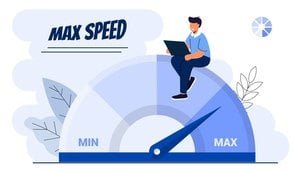Largest Contentful Paint (LCP) is a key metric used to measure website performance. It represents the time taken for the largest element in the viewport to be rendered on the screen. Improving LCP can lead to a better user experience and can also have a positive impact on search engine rankings.
Here are some tips to improve website performance on LCP:
 Optimize Images: Large images can significantly impact LCP. Optimize images by compressing them without sacrificing quality. You can also use lazy loading to load images only when they are needed.
Optimize Images: Large images can significantly impact LCP. Optimize images by compressing them without sacrificing quality. You can also use lazy loading to load images only when they are needed.
Use a Content Delivery Network (CDN): A CDN can reduce the time taken to fetch resources from the server by serving them from a server closer to the user.
Minimize Server Response Time: Slow server response time can increase LCP. Use a fast web server and optimize database queries to reduce server response time.
Reduce Third-party Scripts: Third-party scripts can also impact LCP. Remove any scripts that are not necessary and delay loading of non-critical scripts until after the page has loaded.
Optimize Web Fonts: Large web fonts can also impact LCP. Use web fonts that are optimized for performance and consider using system fonts as an alternative.
Use Browser Caching: Browser caching can reduce the time taken to load resources by storing them on the user’s device. Set the cache expiration time to an appropriate value to ensure that the user always sees the latest version of the website.
Remove Render-blocking Resources: Render-blocking resources can increase LCP. Minimize the use of render-blocking resources such as CSS and JavaScript by deferring their loading or inlining critical CSS.
Prioritize Above-the-fold Content: Prioritize above-the-fold content to load first, as this is what the user sees first. This can be done by using critical CSS and lazy loading non-critical resources.
By implementing these tips, you can improve your website’s performance on LCP and provide a better user experience for your visitors.


